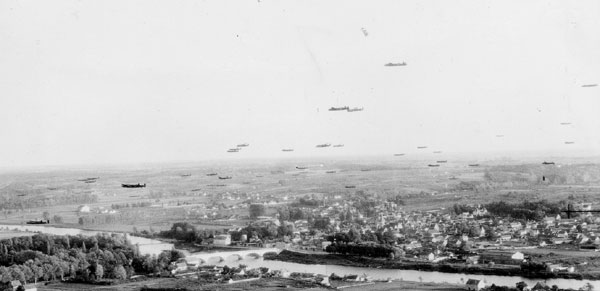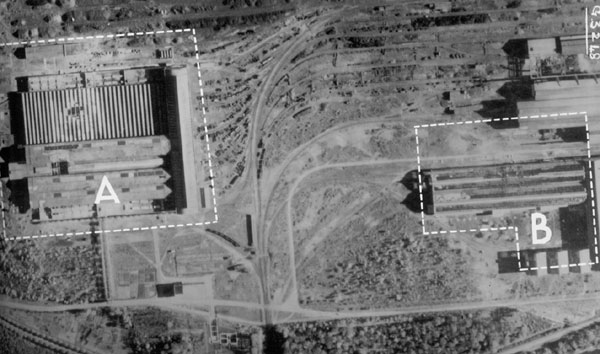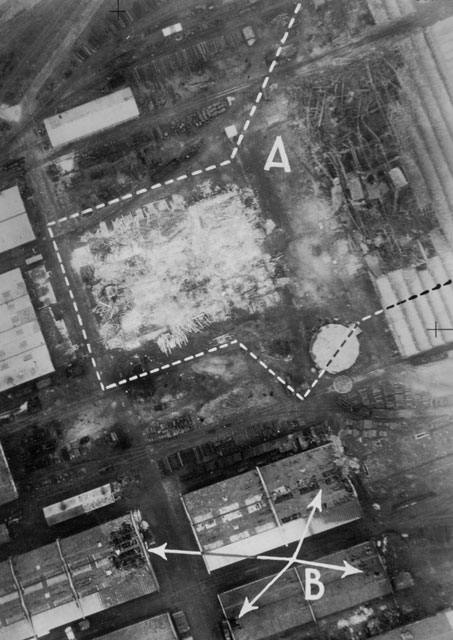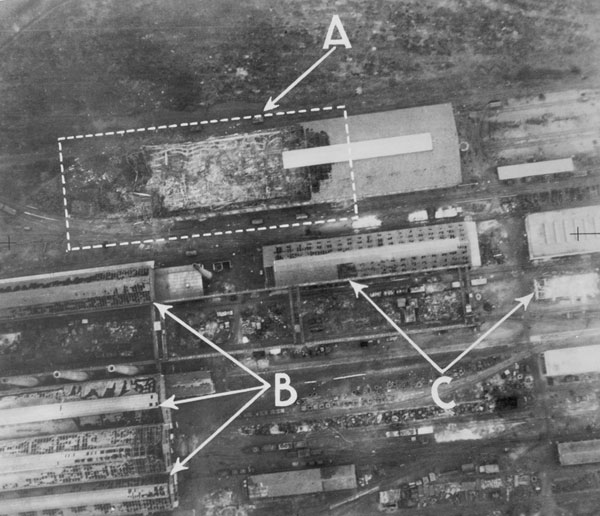Air Operations, Aleutians
5 28th Composite Bomb Group B-25s attack Kiska.
[Air Operations, Europe
BOMBER COMMANDDaylight Ops:
- 94 Lancasters are sent to Le Creusot, 88 to attack the Schneider factory, the French equivalent to the Krupps works, and 6 to attack the nearby transformer station which supplied the factory with power.
- The force is led by Wing Commander L. C. Slee of 49 Squadron; force flies at nearly tree-top level across France without any interference from German fighters. At the last turning point near Nevers, the force gains altitude for the bomb run. With hardly any flak, the bombs are dropped from heights between 2,500 and 7,500 feet. 140 tons of bombs are dropped and the planes return without incident. The crews claim a successful attack, but photographs show most of the bombs fell short into workers' housing near the factory. Some bombs did fall into the factory area, but not much damage.
- 1 of the planes bombing the transformer station is lost when it hit a building because it was flying too low.
|
|
|
|
- 11 Bostons are sent to Le Havre, but have to turn back. 6 others carry out sweeps in order to divert attention from the main bomber force.
- There are no losses.
- 7 Stirlings lay mines in the Baltic off Bornholm and Sassnitz without a loss.
- 94 Lancasters attack the Schneider armaments and locomotive works at Le Creusot, southeast of Paris, at dusk. 1 bomber is lost.
Air Operations, Solomons
- At 0720 hours, in response to radio-intelligence findings, 8 VMF-121 F4Fs intercept a force of 18 D3A 'Val' dive-bombers and 18 A6M Zeros from Japanese fleet carriers Hiyo and Junyo that are temporarily based at Buka Airdrome. As the 'Vals' are attacking the US destroyers that are shelling the new Japanese Army supply dumps west of the Lunga Perimeter, the F4Fs completely disrupt the bombing attack and down 6 'Vals' and 4 Zeros. 1 F4F and its pilot are lost.
- Throughout the rest of the day, numerous 67th Fighter Squadron P-39 and P-400 fighter-bombers and 6 New Hebrides-based 11th Heavy Bomb Group B-17s help destroy the Japanese Army supply dumps.
- 15 G4M 'Betty' bombers and 9 A6M Zeros attack Guadalcanal without opposition.
Battle of the Atlantic
The US freighter Angelina (4772t), in New York-bound Convoy ON-137, but struggling, is torpedoed by U-618.
[Britain, Home Front
The convoy of vessels for Operation TORCH, the landing in North Africa, begins to assemble in the Firth of Clyde, Scotland.
[Burma
Orders are given to the 14th Indian Div, advancing slowly into the Arakan, to reach a line between Rathedaung and Buthidaung by the start of December in preparation for further operations toward Akyab.
[Eastern Front
SOUTHERN SECTORChuikov ferries the rest of Lyudnikov's 138th Division into Stalingrad during the previous night as German attacks continue.
German attacks south from the Tractor factory along the bank of the Volga drives the 138th Rifle Division back. The 84th Tank Brigade also attempts to hold back the Germans. New attacks also break into the southern part of Spartakovka. An attack on Red October is repulsed, but an assault along the railway lines and upon the Barrikady penetrate the junction of the 138th and 308th Rifle Divisions. The Germans then enter the northwest corner of the Barrikady complex, where fierce battles erupt. Heavy fighting also sees the fall of the Tractor factory, the remnants of the 37th Guards being destroyed.
With losses among his command staff mounting, Chuikov moves his headquarters back to the south, near the Mamayev Kurgan.
[Guadalcanal
Alerted by the intercepted radio messages, F4Fs are in the air early and attack the Japanese which come over at 0730 with 18 dive bombers and 18 Zeros. The Americans shoot down 6 bombers and 4 Zeros for a loss of 1 fighter.
B-17s at Henderson Field |
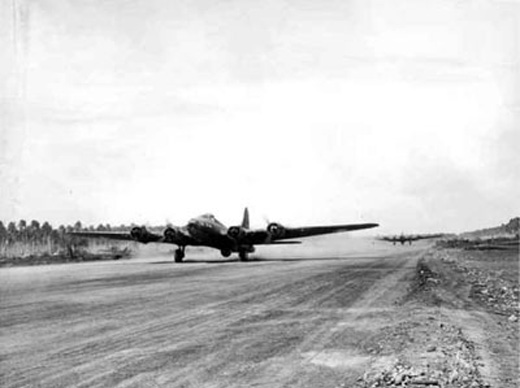 |
During the night Yamamoto sends the Tokyo Express down The Slot again. 3 cruisers and 8 destroyers anchor off Tassafaronga and another 5 destroyers off Cape Esperance. Several shell the American positions including the fighter field, newly discovered by the Japanese as a separate entity. Japanese destroyers land more troops. Gen Hyukatake makes decsion for attack on Henderson, Y-Day, will be October 20.
The US destroyers Aaron Ward (DD-483) and McCalla (DD-488) move west of Kokumbona to shell Japanese positions on the island. 2,000 rounds of 5-in ammunition are fired into supply dumps and destroy large quantities of ammunition and food. There is big loss in transport: trucks, armored vehicles and fuel supplies.
[New Guinea
Bitter fighting is in progress on the Kokoda Trail at Eora Creek, where the Japanese commit their reinforcements. The Australian 16th Brigade has now taken over from 25th Brigade at the head of the advance. Abel's Field at Fasari, on the upper Musa River near Mt Sapia, becomes operational. The field is named for Cecil Abel, a missionary who constructed it with assistance of native labor and equipment dropped by the 5th Air Force. The first luggers reach Wanigela and continue toward Pongani with men and supplies.
[Pacific
The US submarine Trigger (SS-237) sinks the Japanese merchant cargo ship Holland Maru (5869t) near the mouth of Bungo Suido, off Kyushu.
[